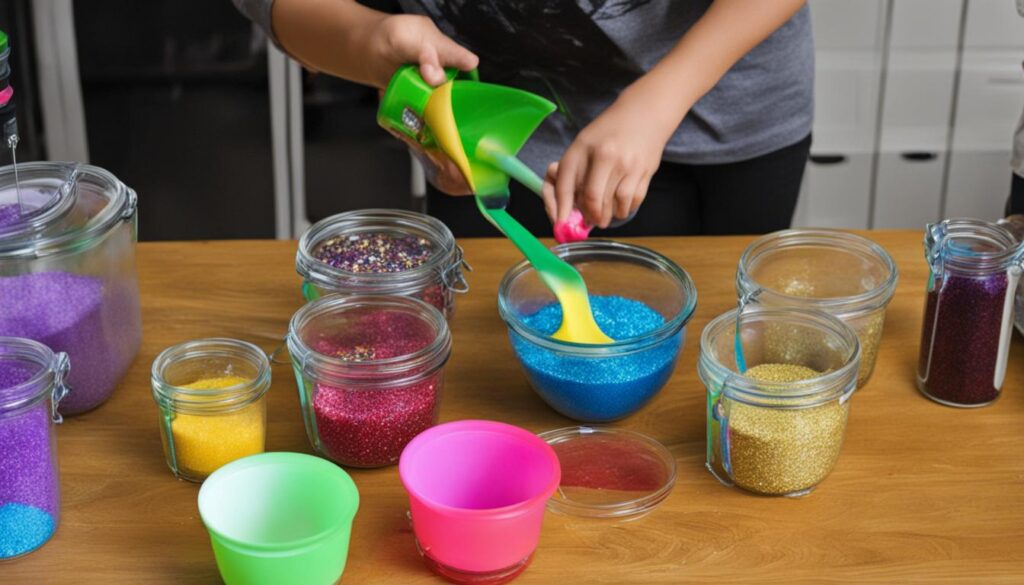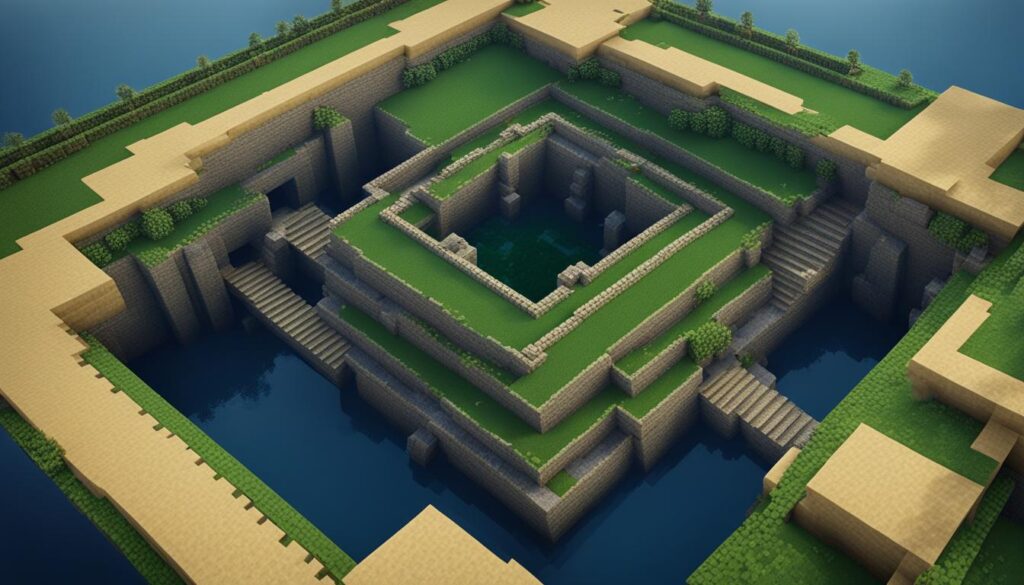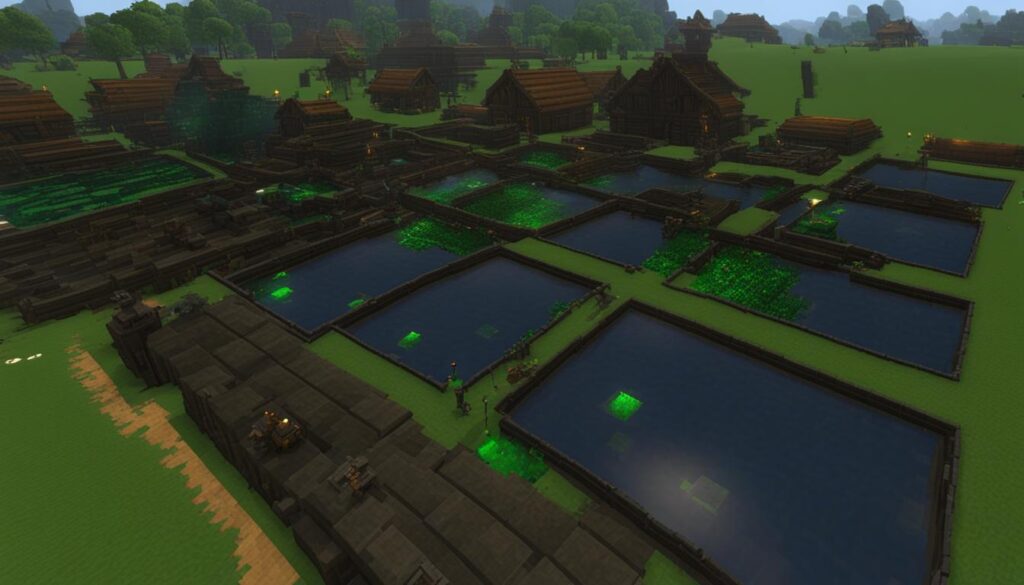

Slimes are a unique mob in Minecraft that drop slime balls, which are essential for crafting various items like sticky pistons and leads. In this guide, I will provide a step-by-step tutorial on how to build a slime farm at home in Minecraft. This comprehensive guide will cover everything from finding a slime chunk to constructing the farm and optimizing its efficiency. Let’s dive in!
Key Takeaways:
- Slime farms in Minecraft provide a sustainable source of slimeballs for crafting various items.
- Building a slime farm requires careful planning and preparation.
- Locating a slime chunk is crucial before constructing a slime farm.
- Spawn-proofing the surrounding area optimizes slime spawn rates in the farm.
- Constructing the slime spawn platform and collection area ensures maximum slimeball production.
Why Should Players Build A Minecraft Slime Farm?
Slime farms are a valuable addition to any Minecraft player’s world. By building a slime farm, players can easily obtain slimeballs, which can be crafted into useful items like leads and sticky pistons. But why should players go through the effort of building a slime farm? Let’s explore the reasons and benefits:
1. Sustainable Slimeball Source
One of the main reasons to build a slime farm is to have a sustainable source of slimeballs. Slimes spawn in slime chunks and drop slimeballs upon death. By creating a slime farm, players can ensure a constant supply of these valuable resources, eliminating the need to wander around in search of slimes.
2. Crafting Essentials
Slimeballs are essential for crafting various items in Minecraft. From sticky pistons that power redstone contraptions to leads that help players control their farm animals, slimeballs have a wide range of applications. By having a slime farm, players can easily stock up on slimeballs and have them readily available for their crafting needs.
3. Redstone Contraptions
Redstone enthusiasts will find a slime farm to be an invaluable asset. Slimeballs can be used to create sticky pistons, which are vital components in many redstone contraptions. By having a slime farm, players can experiment with advanced redstone mechanisms and unleash their creativity in building complex automated systems.
With these reasons in mind, it’s clear that building a slime farm is a worthwhile endeavor for Minecraft players. Not only does it provide a sustainable slimeball source, but it also opens up new possibilities for crafting and redstone engineering. So, roll up your sleeves, gather the necessary materials, and get ready to embark on the adventure of building your very own slime farm in Minecraft!


Table: Slime Farming Benefits and Uses
| Benefits and Uses | Explanation |
|---|---|
| Sustainable Source | A slime farm provides a reliable and constant supply of slimeballs, eliminating the need to search for slimes in the wild. |
| Crafting Essentials | Slimeballs are essential for crafting items like sticky pistons and leads, which have various applications in the game. |
| Redstone Contraptions | Slimeballs are used to create sticky pistons, enabling players to build advanced redstone contraptions and automation systems. |
Section 3: Materials Needed To Build A Slime Farm
Before embarking on the construction of a slime farm, it is essential to gather all the necessary materials. Having the right tools and resources will ensure a smooth and efficient building process. Here is a comprehensive list of the essential items needed:
- Slabs: Slabs are used to create the spawning platforms for slimes. They can be crafted using various materials such as wood, stone, or even nether bricks.
- Jack-o’-lanterns: These light sources are crucial for providing adequate lighting in the slime farm. Jack-o’-lanterns can be crafted by combining a carved pumpkin with a torch.
- Fences: Fences are used to mark the boundaries of the slime farm and prevent slimes from escaping.
- Iron Blocks: Iron blocks are necessary for creating the iron golem area, which helps increase slime spawn rates.
- Campfires: Campfires are useful for creating a smoke signal that scares away other mobs, ensuring that only slimes spawn in the farm.
- Hoppers: Hoppers are essential for collecting slimeballs and transferring them to chests for storage.
- Chests: Chests are used to store the slimeballs obtained from the farm, ensuring a steady supply for future use.
- Torches: Torches are needed to light up the surrounding area and prevent other mobs from spawning near the slime farm.
It is important to note that the efficiency of a slime farm can be optimized by using enchanted tools, such as a Efficiency V diamond pickaxe, for faster block breaking. Additionally, having access to resources like building blocks, food, and armor is recommended to ensure a smooth building process.


By gathering these materials and having the right tools at your disposal, you will be well-prepared to construct a successful slime farm in Minecraft. Now that we have all the necessary resources, let’s move on to the next section, where we will learn how to find a slime chunk in your Minecraft world.
Section 4: How To Find A Slime Chunk
Locating a slime chunk is the crucial first step in building a successful slime farm. Thankfully, there are several techniques that can help players find these special areas in their Minecraft world. Here are some slime farming techniques to increase slime spawn rates in farms:
1. Using the “/seed” command
One way to find a slime chunk is by using the “/seed” command in the game. This command reveals the world seed, which can then be used with online slime chunk finders to locate the chunk’s coordinates. Simply type “/seed” in the chat and note down the number that appears. Then, input the seed into a slime chunk finder tool, like the one provided by Chunkbase, to pinpoint the exact location.
2. Enabling chunk borders with F3 + G
Another method is to enable chunk borders by pressing F3 + G on the keyboard. This will display a grid overlay that helps visualize the boundaries of each chunk. Slime chunks are typically random and independent of the terrain, so observing the chunk borders can give players a general idea of where to start digging and exploring for slime farms.
3. Utilizing online tools
Online tools like the Chunkbase Slime Chunk Finder can be extremely useful for finding slime chunks. These tools offer an interactive map that players can navigate to locate slime chunks based on their world seed. By inputting the seed and exploring the map, players can easily identify potential slime spawning areas and plan their slime farm accordingly.
By combining these techniques, players can increase their chances of finding a slime chunk and successfully building a slime farm. It’s important to note that slime spawn rates can vary, so multiple slime chunks may be necessary to achieve optimal slime production. Now that you know how to find a slime chunk, let’s move on to the next step: clearing out the slime chunk to prepare for farm construction.
Section 5: Clearing Out The Slime Chunk
Clearing out the slime chunk is a crucial step in building a successful slime farm. By creating a suitable environment, we can ensure optimal slime spawn rates and maximize slimeball production. Here are the steps to effectively clear out the slime chunk:
Step 1: Determine the Boundaries
Start by identifying the boundaries of the slime chunk. To do this, refer to the chunk coordinates and use F3 + G to enable chunk borders. This will help you visualize the area you need to clear. Make sure to remove all blocks within the slime chunk to ensure the highest slime spawn rates.
Step 2: Dig Down to Y=40
Once the boundaries are established, dig down to Y=40 or lower within the slime chunk. This is the optimal height for slime spawning. Be thorough in your excavation, removing all blocks in this range. It is recommended to use tools with high efficiency, such as diamond or netherite pickaxes, to speed up the process.
Step 3: Illuminate the Area
To prevent other mobs from spawning and reducing slime spawn rates, it is essential to light up the cleared area. Place torches or other light sources throughout the slime chunk to maintain a high slime spawn rate. This will ensure that slime balls are the predominant mob spawn within the farm.
By following these steps, you will effectively clear out the slime chunk and create an optimal environment for slime farming. Remember to take precautions and be thorough in your excavation to avoid any issues during the construction process.
Table: Tools and Materials for Clearing Out the Slime Chunk
| Tool/Material | Description |
|---|---|
| Diamond or Netherite Pickaxe | A high-efficiency pickaxe will speed up the excavation process. |
| Torches | Light sources used to prevent other mobs from spawning. |


Now that the slime chunk is cleared, we are one step closer to building a successful slime farm. In the next section, we will discuss how to spawn-proof the surrounding area to optimize slime spawn rates. Stay tuned!
Spawn Proofing The Surrounding Area
When it comes to slime farming, spawn proofing the surrounding area is crucial for maximizing slime spawn rates. Slimes are shy mobs and won’t spawn if there are other mobs nearby. To create an ideal environment for slimes to spawn in the slime farm, certain techniques can be employed.
The first step is to place torches strategically throughout the area. Slimes require a light level of 7 or less to spawn, so it’s important to illuminate the surroundings adequately. Placing torches every few blocks will ensure that the area remains dark enough for slimes to spawn, while also preventing the spawning of other hostile mobs.
Clearing out tunnels and caves in the vicinity of the slime farm is also essential. Slimes have specific spawning requirements and will only spawn in certain conditions. By removing any nearby tunnels and caves, players can eliminate other potential spawning spots, directing the slime spawns towards the slime farm instead.
Killing hostile mobs in the area will further increase the chances of slimes spawning in the slime farm. Hostile mobs, such as zombies and skeletons, can interfere with slime spawns. By eliminating these mobs, players can ensure that slimes have a better chance of spawning and that the slime farm operates optimally.


By implementing these spawn-proofing techniques, players can significantly increase the slime spawn rates in their slime farms. Remember to regularly check the farm and maintain the optimal spawning conditions to maximize slime production.
Steps To Make Slime Spawn Platform and Slime Collection Area
Now that all the necessary preparations are complete, it’s time to start building the slime spawn platform and the slime collection area. These components are key to creating a successful slime farm and optimizing its efficiency. Follow these steps to ensure a smooth operation:
Step 1: Level the floor
Begin by clearing out any remaining blocks on the slime chunk floor. Make sure the area is completely flat and free from any obstructions. This will provide a spacious platform for slimes to spawn and move around.
Step 2: Place slabs and light up the area
Now, place slabs on the entire floor of the slime chunk. Slimes can only spawn on full blocks, so using slabs will prevent other mobs from spawning and maximize slime production. Additionally, place jack-o-lanterns strategically around the platform to provide sufficient lighting and prevent hostile mobs from interfering with slime spawns.
Step 3: Create an iron golem area and set up slime collection system
Next, construct an iron golem area near the slime spawn platform. Iron golems will help attract slimes and increase their spawning rates. Additionally, set up a slime collection system using hoppers and chests. Position the hoppers below the slabs on the slime platform, leading them to chests where the slimeballs will be collected. This system will ensure efficient and convenient slimeball collection.
By following these steps, you will be well on your way to building a successful slime farm and optimizing its efficiency. Remember to regularly check and maintain the farm to ensure its continued productivity. Happy slime farming!
